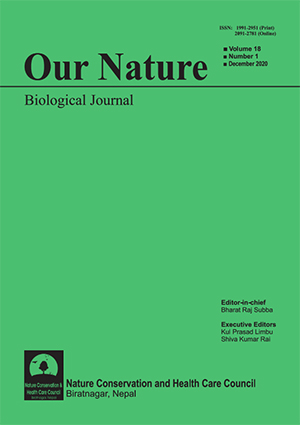The morphohistology and fine anatomy of the olfactory organ in pabda catfish, Ompok bimaculatus (Bloch, 1794)
DOI:
https://doi.org/10.3126/on.v18i1.34237Keywords:
Butter catfish, Cellular constituent, Chemoreception, Microarchitecture, Olfactory mucosaAbstract
The organization of the olfactory system in Ompok bimaculatus (Siluriformes: Siluridae) were investigated by histological and ultrastructural analysis. The nasal chamber was totally engrossed by a boat shaped elongated olfactory rosette with numerous lamella. Histomicroscopically, each lamella was comprised of central core bounded on both sides by the cellular elements of olfactory epithelium. The central core was composed of thick connective tissue, nerve fibres and blood capillaries. The cellular components of the olfactory epithelium were identified based on their staining vigour, architecture, structural characteristics and surface features. The sensory epithelium contained morphologically recognizable ciliated, microvillous and rod receptor neurons. Labyrinth cells, scattered lymphatic cells, secretory mucous cells, stratified epithelial cells bearing microfolds and condensed ciliated supporting cells were observed in the indifferent epithelia. The basal cells were submerged in the deeper zone of mucosa above the basal lamina. Different sensory and nonsensory cells of the olfactory lining were associated with chemical stimulation of the fish studied. This species acquires a well developed olfactory sense for exploring the aquatic environment and able to determine the chemical changes in the surroundings.
Downloads
Downloads
Published
How to Cite
Issue
Section
License
This license enables reusers to distribute, remix, adapt, and build upon the material in any medium or format for noncommercial purposes only, and only so long as attribution is given to the creator.




